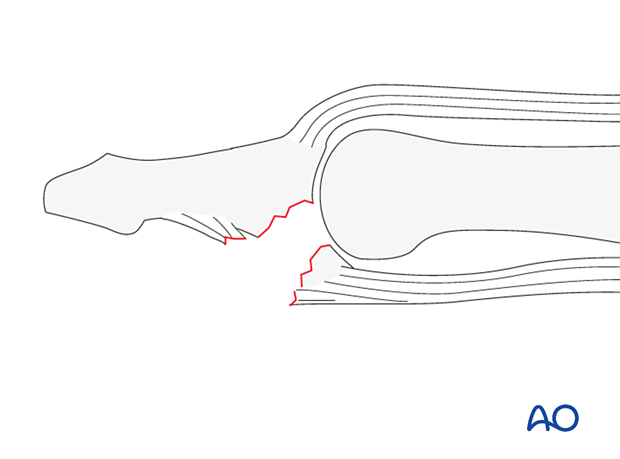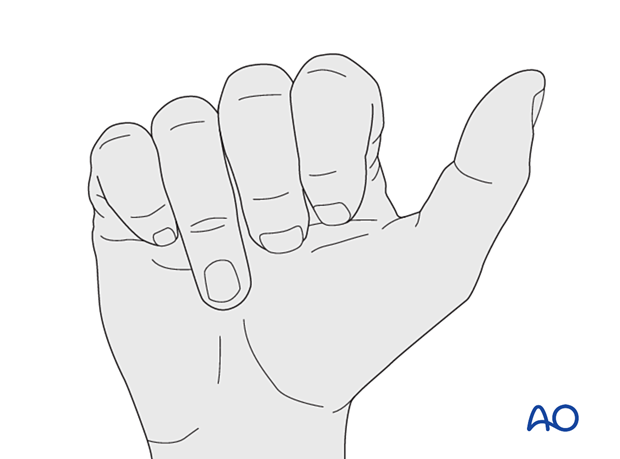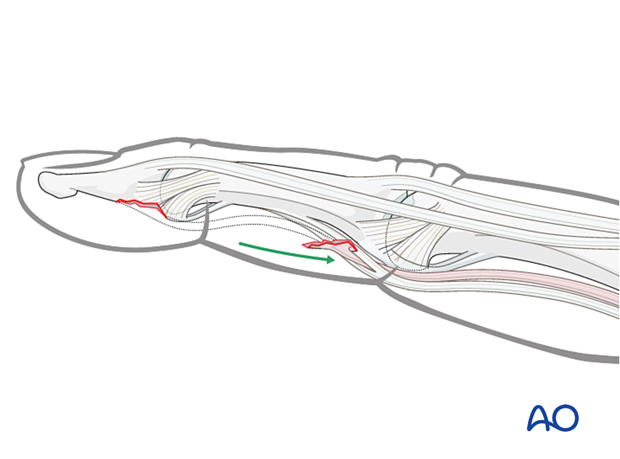Palmar avulsion injury of the proximal end segment
Definition
Bony avulsions (partial articular) of the distal phalangeal base are classified by the AO/OTA as 78.2–5.3.1B, where 2–5 indicates which finger is involved.
The injuries can result in subluxation or total dislocation of the joint.

Further characteristics
An avulsion injury destroys the synergistic balance of the pull exerted by the flexor and extensor tendons. The continuity of the flexor tendon is lost. This results in an inability to flex the DIP joint.
Avulsion fractures of the flexor digitorum profundus tendon are uncommon but particularly disabling. The ring finger is the digit most commonly affected.

Mechanism of the injury
These injuries are commonly caused by sporting accidents.
Typically, hyperextension and a strong pull on the flexor tendon cause this fracture, as happens when the finger gets caught while tackling a sporting adversary.

Vincular arteries at risk
The vincular arteries, essential for vascularization of the flexor tendon, are at risk in palmar avulsion injuries. If the flexor tendon retracts, they are disrupted. This negatively affects the healing process.
Note that the palmar side is facing upwards in this illustration.

Injury types, according to Leddy and Packer
Type I: tendon rupture at its insertion at the distal phalanx, without a bony fragmentThe tendon is retracted, often into the palm, where it can be palpated. The patient feels some tenderness or pain where the tendon is located.
The flexor digitorum profundus (FDP) tendon must be repositioned and reinserted. This is not possible after 10 days following the injury because of:
- Tendon swelling
- Collagen regeneration
- Muscle contracture
Reinsertion after this period will lead to significant flexion contracture of the finger (myostatic contracture).

This is usually not easy to see in an x-ray but may be palpated.
The tendon is retracted to the PIP joint. It is prevented from retracting further by the bony fragment catching in the bifurcation of the superficialis tendon (as shown in the drawing). The long vincular artery remains intact.

This fragment remains minimally displaced because the volar plate attachment, the collateral ligament, and the A4 pulley remain largely intact.

Imaging
AP and lateral view x-rays of a dorsal fracture-dislocation with a big avulsion fragment attached to the flexor digitorum profundus (FDP)














